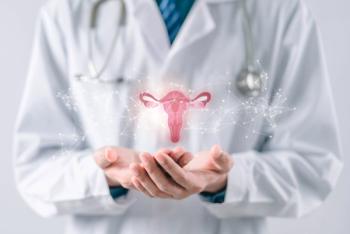
Adding ST Analysis Improves Electronic Fetal Monitoring
Enhancing cardiotocography with ST analysis in fetal monitoring reduces the incidence of instrumental vaginal delivery and the need for fetal blood sampling.
Enhancing cardiotocography with ST analysis in fetal monitoring does not reduce the incidence of metabolic acidosis but does reduce the incidence of instrumental vaginal delivery and the need for fetal blood sampling, concluded the authors of a large individual patient data meta-analysis.1
The use of electronic fetal monitoring (EFM) to better assess which fetuses are at risk for asphyxia has become standard practice during most hospital deliveries. A relatively new method of continuous fetal monitoring combines the findings of traditional EFM with ST analysis of the fetal electrocardiogram.
This study differs from conventional meta-analyses, based on aggregate data, in that the authors used individual patient data meta-analysis with measurable evidence from randomized controlled trials to investigate the additional effect of ST analysis in EFM. Four studies involving laboring women with a term (> 36 weeks’ gestation) singleton pregnancy in cephalic presentation met inclusion criteria. From those studies, data were extracted for analysis from 6524 women allocated to EFM with ST analysis and 6463 women allocated to EFM alone.
Metabolic acidosis, the primary outcome, was identified in 57 women (0.9%) in the EFM plus ST analysis group and 73 women (1.1%) in the EFM alone group. Although using ST analysis in addition to EFM did not help reduce the incidence of metabolic acidosis, it did significantly reduce the frequency of blood sampling and the incidence of instrumental vaginal delivery. The reduced need for blood sampling occurred more often in women with epidural anesthesia than in women without anesthesia, but the study authors acknowledged that this is an uninformative finding, explaining that both groups benefited from additional ST analysis.
The study authors reported that although these results are similar to those of 3 previously published aggregated data meta-analyses, the real impact of ST analysis remains unknown. From a cost perspective, it seems that the additional costs of ST analysis are quite low when compared with EFM and extremely low when compared with the total costs of delivery. This analysis can in no way guide future clinical practice, but the results of an ongoing NIH trial evaluating ST analysis and adverse neonatal outcomes will be crucial in terms of guiding future management, concluded the study authors.
Pertinent Points:
- Continuous electronic fetal monitoring with additional ST analysis does not reduce the incidence of metabolic acidosis but does reduce the incidence of instrumental vaginal delivery and the need for fetal blood sampling.
- Follow-up studies should focus on long-term behavioral and neurological outcomes to make it possible to conduct long-term cost-effectiveness studies.
References:
1. Schuit E, Amer-Wahlin I, Ojala K, et al. Effectiveness of electronic fetal monitoring with additional ST analysis in vertex singleton pregnancies at >36 weeks of gestation: an individual participant data metaanalysis. Am J Obstet Gynecol. 2013;208:187.e1-13.
Newsletter
Get the latest clinical updates, case studies, and expert commentary in obstetric and gynecologic care. Sign up now to stay informed.










